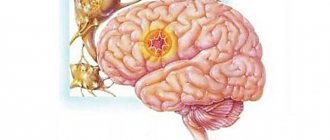Transplantation of various organs has long been no longer a miracle: the heart, kidneys, liver, bone marrow successfully take root in the new body. However, until now, an operation to transplant the brain from one person to another has been inaccessible, although medical scientists are tirelessly searching for a solution to this problem.
The central part of the nervous system requires a special approach. When will doctors perform such operations without problems? What is the cost of a brain transplant? And who will the person (the body that received the brain) become: himself or the one who was the previous owner of the new organ? These and other questions interest many. But perhaps the most intriguing question remains: will the transplant provide eternal life and human consciousness? To answer them, you need to take a short excursion into history.
Brain transplantation is the surgical transfer of the brain to another body while preserving the patient’s identity.
History of development: is it possible to do a brain transplant?
Experiments have been conducted since the last century on experimental animals:
- In the mid-20s, for the first time on the planet, scientists S. Bryukhonenko and S. Chechulin, thanks to the autojector and artificial blood circulation machine they created, proved the possibility of the separate existence of a dog’s head without a body. She could move her eyes, tongue, respond to touch, and, moreover, swallow pieces of food. The animal's head lived on the platter for almost two hours.
- And in the mid-50s, V. Demikhov “sewed” the second head on twenty dogs.
- In the early 70s, the American neurosurgeon R. White was able to keep a monkey brain alive in an isolated state for two days. A few years later, White was able to transplant rat and monkey heads into other animals that lived twice as long as the isolated monkey brain. The scientist was unable to achieve a connection between the spinal cord and the brain stem, so the motionless torso served as an artificial assistant to the life of the head. Brain death in both cases occurred due to edema developing at different times
- In the early 80s, a partial brain transplant was successfully carried out by D. Krieger from one mouse into the brain cavity of another in order to replace the diseased area with a healthy one. Only one attempt out of eight was unsuccessful.
Scientists, having studied such an important issue as brain transplantation for almost a hundred years, have not reached a consensus on the possibility of this operation. Moreover, just a few decades ago it was difficult to imagine that a human head could be transplanted onto another body. However, in 2021, neurosurgeon scientist S. Canavero proved this possibility after a successful operation. Although an inanimate body was used as a patient.
Is a brain transplant possible: what scientists say
According to A. Bordey, an employee at Yale University, a brain transplant is possible, but to achieve the desired effect, a spinal cord transplant is also necessary, otherwise the person will be deprived of independent movement. As for preserving the soul and individuality, it is difficult to predict and give an unambiguous answer.
After all, when the body grows and develops, the brain also changes, therefore, during transplantation and regeneration, a person’s personality will certainly change. Only one shock will leave its mark.
According to the professor, after transplantation of this organ, the individual will not be granted immortality. After all, the brain also ages. Advances in science have successfully made it possible to replace kidneys, other organs, and even the heart with artificial ones, but it is impossible to replace the brain in this way. This is fraught with neurodegeneration, which will lead to the formation of tumors or decreased intelligence.
According to another scientist from the same university, H. Abbed, the transplant is quite real, but for now in the future. When the problem of connecting the patient’s brain to the spinal cord is successfully resolved. While the task is unsolvable, the latter’s injuries are fraught with irreversible consequences.
When this becomes a reality, then, according to the professor, the patient will acquire a personality along with the transplanted brain - after all, it is he who is responsible for this feature.
But another scientist K. Slavin is convinced that it is not far off when neurosurgery will be able to connect the body to the brain, and not vice versa. And such bodies will be created artificially. At the same time, the person will retain his entire personality. But he also agrees with the opinion of other scientists that even this will not ensure immortality. To solve this problem, you need to find a means that can “start” the renewal process at the cellular level.
What opportunities does it open?
If in the future science advances the development of technology in this direction to such a level that human brain transplantation becomes a completely common procedure, this will make it possible to use it, for example, in the following situations:
- in case of bodily injuries incompatible with life;
- for the treatment of oncological diseases;
- with dangerous congenital bodily defects;
- to get rid of severe mental illnesses that can only be treated by relieving symptoms;
- for complex burns covering most of the body;
- with functional organ failure.
It can also be used for gender reassignment, for transplanting a thawed cryopreserved brain into a grown body and solving other problems.
Eternal life: replacing the brain with another carrier while preserving consciousness and personality
Who among us has not thought about living forever at least once in our lives? This happened to me too. It is possible to make a biological cell capable of an infinite number of divisions, without depending on the type of cell. But as a real techie, I understand that the human body is imperfect. Eternal life for a biological individual can be achieved in two ways. Varying in their complexity and capabilities that these solutions will provide. 1. Controlled endless division of a biological cell 2. Transfer of consciousness to another more fail-safe medium.
The point of the article and the subsequent discussion is to explore the theory specifically according to point 2, because it does not mean copying a personality, when your brain is copied into someone else, but at the same time you remain yourself, but the transfer of your brain to another medium, so that you do not cease your existence, thought continuum, self-awareness.
Cynicism? Utopia? An inevitable reality.
While it is quite easy to replace a damaged biological body with a new one without loss of functionality, the brain, alas, is almost impossible. Because it won't be you anymore.
Why is this necessary?
The biological mind is vulnerable.
First of all, before other biological life forms. (bacteria, viruses, etc.). Not to mention the lack of power, damage. Biological intelligence is difficult to standardize—no two brains are the same. As a result, it cannot be trained instantly. Read - release an “expansion unit” that can be connected to any brain - and you can already solve the range of tasks for which it is designed.
If we create a technology... an artificial eternal brain, then on the one hand, we can scale it as much as we like with an increase in performance, without damaging the scalable part, on the other hand, we can connect it to a biological body in the same way as a natural brain. At the same time, be content with all the benefits and pleasures of the biological body, knowing that you are immortal. In any case, the transfer technology (not copying!) is described below. She doesn’t care from which media to which she transfers.
Technology of consciousness transfer. High Level Design
There are only 2 axioms that have been empirically confirmed and are intuitive for people. Not requiring proof. There is the original brain/consciousness. Let's call it X. Let X consist of some units x , losing which X practically does not lose functionality (well, or gets closer to the ideal - DOES NOT lose functionality).
For a biological brain, these will be neurons or clusters of connected neurons. 1. From the point of view of the interested subject X: if X is copied into Y, then X is destroyed, then Y will be the double of X at the time of copying. But entity X will no longer exist.
In practical terms, this means that if your brain was copied and you were killed, then your copy will live, but not you. She will think like you, do the same as you. But at the moment of your death you will cease to exist for yourself. Those. your conscious existential thought continuum will be interrupted. What seems paradoxical is that for everyone else you will live (if they do not know that you were copied), but for yourself you will not. A sort of philosophical paradox.
2. If X dies from m to nx , where m>=1, n>=m, then X will not die
Let me explain in practice. You drink a bottle of vodka. One or more neurons die (let's say). Or they hit you hard on the head. The neurons died, but after that you did not stop being yourself. All the memories that you had. all the skills, your self-awareness - everything is preserved. Those. you have not ceased to exist. And after a blow/glass of vodka, you are you, and not your copy. All thanks to the noise immunity of the drive (brain). It’s another matter if you were seriously hit and/or you also drank before that. So much so that they lost consciousness. The neocortex turns off, but it does not collapse (does not die). the phrase “conscious existence” is not applicable. Existence remains. But self-conscious existence (the existence of a neural network that stores information about itself and the world) still continues.
A small lyrical digression. And here is an interesting situation. De facto, human consciousness continues to exist. Those. the brain functions and it remains the same brain X from the point of view of brain X
. But others perceive it as a loss of consciousness. It's funny. And if you copy X into Y, and destroy X, then for those who do not know about copying, “X” will continue to consciously exist and from their point of view it will be X. But from the point of view of X, X will not continue to exist. Because no more X.
What follows from this in practice? From the first axiom it follows that the system cannot be transferred completely. Those. if we do not transfer the system completely, then we can transfer and not copy. (sufficient condition) From the second axiom it follows that the system should be transferred over the minimum possible components of this system. The temporary absence of which will not affect the functioning of the system (a necessary condition)
It follows from this that it is possible to replace the minimum possible set of x's in X in parallel with the corresponding y's. In this case, each element x needs to be associated with y (for now, for simplicity, we are considering the ratio 1:1). In this case, we must ensure that the same functions are performed as x was performed. Those. many functions
, which performed x
will be saved in y, but at the same time y will have the new
properties .
The simplest iterative example. We take the brain, replace one neuron with a silicon analogue, which is designed immediately to “get along” with biological neurons. And so all the neurons one by one. On the one hand, because you temporarily lose one neuron at a time - you do not stop life and your conscious existence, self-awareness. practically anything
.
And immediately after the replacement
you will have everything the same as before the replacement. Those. you don't lose anything at all. You purchase another media. And since X is not completely copied into Y with the subsequent destruction of X (where Y is another medium), then it will not be your double, but you.
(...technology development....) Profit!!! You can move
yourself anywhere. You can increase your computing power as much as you like, etc. You can live as long as you like and adapt to changes in the outside world in any way you like. If you fantasize, it is not impossible to transfer yourself (when the appropriate technologies are available) into, say, a piece of drifting interstellar dust. But from a purely practical point of view, one must also have action potential. Conscious dust must be able to do something, otherwise why exist. But this is already philosophy 
Open questions, the solution of which can be brought closer by the creation of technology
Replacing neurons directly inside the brain requires fairly advanced technology.
Perhaps you can simply connect an electronic one to a biological brain. Through a wire into the ear Before the transfer begins - biological - complete. Electronic - empty. Biological - X, electronic - Y. X is connected to Y so that initially the consciousness of X is distributed between the system of storage devices X + Y
Through a wire into the ear Before the transfer begins - biological - complete. Electronic - empty. Biological - X, electronic - Y. X is connected to Y so that initially the consciousness of X is distributed between the system of storage devices X + Y
Copying. We turn off a neuron/section in the biological brain. We copy to Y. The copied area did not disappear anywhere, and after copying to Y and deleting it to X, the consciousness remained unharmed, because X continues to see everything that is in Y. So, piece by piece from X to Y. Until X becomes empty.
If how to “turn on” a section in Y is even more or less clear, then how to “turn off a section” in X...
Summary
I only proved
the fundamental possibility of transferring consciousness to any medium.
It doesn’t matter where we will transfer from where to. From a biological brain to a silicon one, from a silicon brain to a plasma, from a plasma to quarks, or somewhere else, into a parallel universe. The only requirement is that the source system (the one from which the transfer of consciousness occurs) must be noise-resistant. Those. it must be able to lose at least
one element of which it consists without significant loss to itself. In this case, the significance of the losses will be expressed in the size of memory failures of one kind or another. This is a necessary condition. And it is sufficient that the system should not cease to exist when this single element is turned off. Such a system will be portable.
I don’t argue that this will require technology, but it is possible. What technologies are we talking about in the comments.
but it is possible. What technologies are we talking about in the comments.
Added Sat Sep 15 02:10:52 GMT+2 ————————————————
Discussion and its results
————————————————
I am very grateful to everyone who joined the discussion. Since not all people understood what I wanted to convey the first time, and I had to clarify in the comments, I realized (how) that the article should be supplemented with a thought experiment. Which, however, will differ from what was done earlier.
Plus, you should add a block on consciousness. When it exists, when it doesn't. This is a function of consciousness over time. And investigate whether it has breaks. One is already planned (@streepteaze pushed for this). Because on the one hand, it will make it easier to understand (I implied this, but did not mention it explicitly anywhere). Some people took it for granted on the fly. Some don't. Because I didn't mention it and that's my mistake. On the other hand, the explanation will become simpler and more formal
It will take some time to finalize. Think, collect information. End the discussion. After that, I will present this article in a new, more formalized and understandable form. Taking into account all comments and objections.
Some interesting points also emerged. But about them - in an updated article.
05/08/2013 UPD: The approach I propose is invariant with respect to the definition of “you” and “I”. Those. By following the proposed algorithm, you can transfer “I” from one medium to another without defining “I”. It doesn't matter WHAT is transferred. The only important thing is that it will be transferred. "I" turns out to be a "free variable"
How is a brain transplant done?
As mentioned above, half a century ago the scientist R. White managed to transplant a monkey’s head into the body of another. Dr. Canavero suggests using a similar technique. According to him, the main problem remains manipulation of the spinal cord on both sides.
Transplanting a head along with the brain requires cooling the body to a certain temperature, after which the spinal cord is removed and one is replaced with the other, plus it will be necessary to connect the new body and head, for which glue (inorganic polymer) is used. This method has been used on experimental dogs and other animals.
The complexity of the operation lies in the reverse alignment of all the arteries, muscles, nerves and many other connections. However, when even a few of them are restored, one can already hope that the patient will not be immobilized. Electrical stimulation of the spinal cord is then used to teach new functions to nerve cells.
The operation will require a huge number of doctors—at least a hundred—to carry it out in one and a half days. The heads must be removed in a single step, no more than 60 minutes are allotted for their reconnection - the human brain cannot remain longer than this time, since a constant flow of oxygen and blood is necessary. When asked how much a brain transplant costs, neurosurgeon Canavero said the operation would cost at least £9 million in the future.
To carry out a brain transplant operation, according to scientists, a team of hundreds of doctors will be needed
Features of brain transplantation
Although this is not as large-scale an operation as a head transplant, and does not require the movement of all muscles, vessels, nerves and tendons, however, other difficulties arise - his reaction to the replacement of the torso, a different configuration of the skull, is unknown. There are also other obstacles without overcoming which a successful brain transplant is impossible:
- Restoration of pathways in the central nervous system (reinnervation). A huge number of nerve fibers and conductors are closely connected to the brain, a significant part of them passes through the spinal cord, and if they are destroyed, they are, as a rule, unable to recover. It is necessary to artificially regenerate them.
- The problem of tissue rejection. Their incompatibility causes swelling; it can manifest itself literally in a couple of hours, and sometimes it makes itself felt only after a while, for example, several days. Edema during transplantation is the main cause of brain death with its own distinctive features. It will be necessary to solve tissue compatibility problems and suppress rejection.
- Regeneration of nerve tissue. They themselves are practically not restored, and a human brain transplant is always associated with brain damage.
- Protective reaction of the body. She does not accept foreign bodies, so her behavior during transplantation of a new organ is unpredictable and may even stop functioning. To block the patient's immunity, he is prescribed immunosuppressants before surgery. The success rate increases, just like getting the disease.
A human brain transplant is an extremely complex operation. The technique of conducting it involves not only solving problems with maintaining the integrity of the brain, but also how the shock will be perceived by the body and how much it will affect the psyche. In addition, it will be necessary to reconnect all tissue areas, nerves, and vessels with each other to the greatest precision. If nerve fibers are damaged, the brain will not send signals to the body, which means that an incorrect reaction to stimuli will occur and control over the corresponding tissues will be lost. As a result, the new body will become “uncontrollable.”
To implement this task, S. Canavero intends to use human brains that have undergone cryo-freezing of bodies. According to the scientist, it is possible that he will be able to breathe life into the first frozen patient as early as 2021.
Read more about the law on automatic probate of organs
At the moment, this project is at the finalization stage. Ultimately, it is planned to issue a law that will guarantee reliability and safety for both parties - the donor and recipient, as well as their loved ones. The project will include a description of the following processes:
- establishing the exact time of death;
- assessment of the condition of internal organs and the extent of damage;
- identification of parts suitable for transplantation;
- the possibility of relatives influencing the permission of transplantation;
- creation of a unified database of those who refused or agreed during their lifetime, a database of those in need of a transplant, indicating the required organ, blood type and other factors affecting the success of transplantation;
- the ability to track the entire path of an organ, starting from the donor and ending with the recipient.
From the editor: Causes of brachial neuritis, symptoms of the disease and its treatment
Those who oppose this bill argue their position due to the possible danger to the lives of those on the registry. For example, kidnapping, murder under the guise of an accident, etc.
However, those involved in the creation of the document assure that access to this database will be limited. That is, anyone who wants to view the data will not be able to. When creating such a register, the experience of American colleagues is taken into account. Only emergency services personnel have access there - police, fire service, ambulance, rescuers. Also, in the USA, consent or refusal for transplantation is issued upon receipt of a driver’s license.
In addition, the law provides for the creation of state standards for doctors who must coordinate among hospitals where death is certified and transplant centers. Also, these specialists will evaluate the donor body parts, check the refusal or consent for organ transplantation, their suitability and compliance with the main parameters.
In Russia, the only city where the transplantation system is established at the state level is Moscow. There are about 10-12 hospitals here, specializing in transplants of different levels of complexity.











